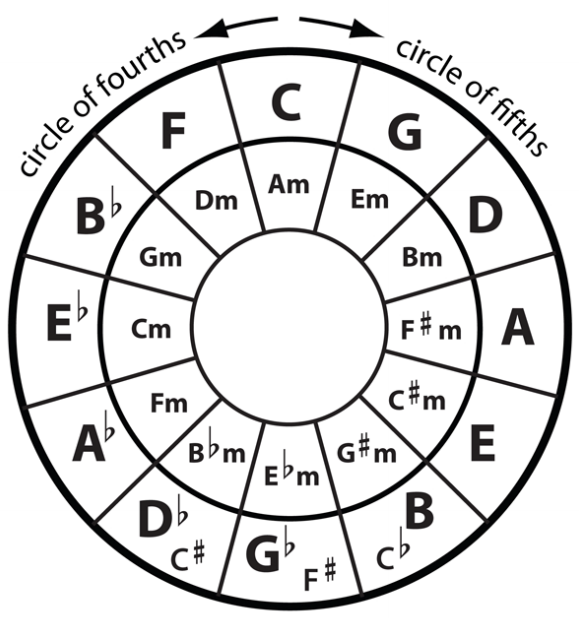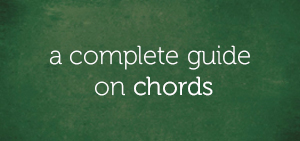In this lesson, we’ll be looking at the differences between the parallel minor key and the relative minor key.
It is very important to understand the relationship between these two minor key types and how they are related to every major key on the keyboard.
A vast majority of musicians still don’t know the difference and similarity between the parallel minor key and the relative minor key and it’s a very educating and exciting topic that I’ve taught over the years and I’ve finally decided to share it with you.
Before we go into what we have to learn today, let’s refresh our minds on the minor key.
A Short Note On The Minor Key
There are two key types in tonal music: the major key and the minor key.
Attention: Most of the songs we play and sing are in the major key and that’s why the major key is emphasized more than the minor key.
All the white notes on the keyboard starting from A to A:
…are the scale tones of the key of A minor:
Keep in mind that the natural minor scale is the traditional scale of the minor key, For example, the A minor scale:
…is the traditional scale of the key of A minor.
Also note that in the natural minor scale, the half-steps are between the 2nd and 3rd tones, then the 5th and 6th tones. A closer look at the A minor scale:
…shows that the half-steps are between B and C (the 2nd and 3rd tones):
…then E and F (the 5th and 6th tones):
“Check Out All The Minor Keys On The Keyboard…”
C minor:
C# minor:
D minor:
Eb minor:
E minor:
F minor:
F# minor:
G minor:
G# minor:
A minor:
Bb minor:
B minor:
Now that we’ve reviewed the minor key, let’s go ahead and look at the parallel and relative minor keys.
The Parallel Minor Key Vs The Relative Minor Key
There’s a parallel minor and a relative minor key. Let’s define each of them before we go ahead to distinguish one from the other.
The Parallel Minor Key
The parallel minor key is the minor key that has the same tonic with the major key. For example, if C major is given:
…its parallel minor key would be any minor key that shares the same tonic with the key of C major.
The tonic of the key of C major is C:
Consequently, the parallel minor key of C major:
…is the key of C minor:
A closer look at the key of C major and C minor:
The key of C major:
The key of C minor:
…shows that they share the same tonic (which is C) and that makes them parallel keys.
“Check Out These Two Examples…”
The parallel minor of the key of Eb major is Eb minor:
Eb major:
Eb minor:
…and this is because they share the same tonic — Eb:
The key of G minor is considered as the parallel minor key of G major:
G minor:
G major:
…because they have the same tonic (which is G):
The Relative Minor Key
When a minor key shares the same key signature with a given major key, such a minor key is said to be a relative minor key to the given major key.
For instance, the key of C major and A minor:
C major:
A minor:
…have EXACTLY the same key signature — consequently, they are relative keys.
A look at the music clock:

…will show you the relative minor key for every given major key.
The Parallel Minor Key Vs The Relative Minor Key
The first difference between the parallel minor key and the relative minor key is as clear as crystal:
Parallel minor keys have the same tonic with the given major key while relative minor keys don’t.
For example, C major and C minor are parallel keys:
C major:
C minor:
…and they have the same tonic; unlike C major and A minor:
C major:
A minor:
…where the tonic of the major key differs from that of the minor key.
The second difference between the parallel minor key and the relative minor key is this:
Relative minor keys have the same key signature with the given major key while parallel minor keys don’t.
If you take a look at any relative keys (a major key and a minor key), you’ll notice that they are basically having the same notes:
C major:
A minor:
Unlike in parallel key relationship (like C major and C minor):
C major:
C minor:
…where both keys don’t have the same key signature.
Final Words
Reading through up to this point lets me know that you’re interested in understanding the difference between the parallel minor key and the relative minor key.
In a subsequent lesson, we’ll go a step further into learning how chords can be borrowed from the parallel minor key while you’re still in a major key.
Meanwhile, feel free to share your contributions, questions, and suggestions using the comment box below.
All the best.
Chuku Onyemachi
Latest posts by Chuku Onyemachi (see all)
- The Formation Of Diminished Seventh Chords Used To Be Challenging Until I Did This
- How To Form Seventh Chords In Two Shakes Of A Dog’s Tail Using Third Intervals And The Circle Of Fifths Chart
- I Played The 13sus4 Chord And This Happened…
- How To Build Seventh Chords Like An Architect Using “Foundation And Structure” Concept
- This 4-Week Plan Will Help You Master All The Major Scales







Comments on this entry are closed.